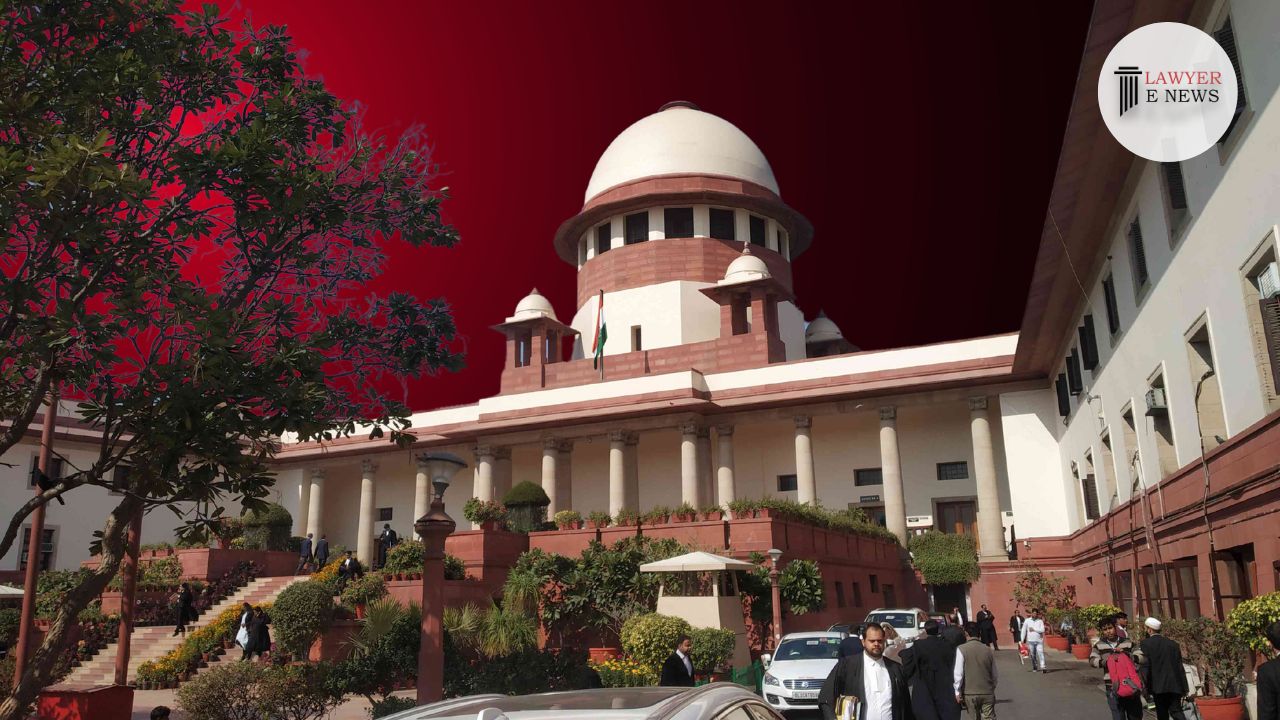-
by Admin
13 December 2025 2:14 AM



The right to enter a marriage and, by extension, the right to end the union, would be covered under the right to form associations under Article 19(1)(c) read with the right to life and liberty under Article 21, senior attorney Indira Jaising explained to a Constitution Bench of the Supreme Court on Thursday.
The senior attorney further claimed that it was unnecessary to consider who was at fault if a marriage had already irretrievably fallen apart. Even if there may not be mutual consent, the court would unavoidably approve the request for dissolution in such a situation.
The Constitution Bench was hearing a number of petitions that raised similar legal issues, including whether it could use its authority under Article 142 to dissolve marriages, what the broad guidelines for doing so were, and whether the use of such extraordinary powers was permitted in the absence of the parties' mutual consent. Justices Sanjay Kishan Kaul, Sanjiv Khanna, A.S. Oka, Vikram Nath, and J.K. Maheshwari made up the five-judge panel. Jaising was one of the amici curiae chosen to support the court.
On the day of the first hearing, Jaising began the discussions by analysing the definition of marriage by drawing on the various legal systems' interpretations of the term. She was clear that her goal was to identify the key qualities of the perfect marriage, then find how to end a marriage that lacked those important elements. The main goal was to maximise the welfare of all parties involved, especially women and children.
The freedom to marry and the right to dissolve a marriage are both fundamental rights protected by Article 21, Jaising vehemently contended on Thursday. "The right to marry is a fundamental right since it is a part of the right to create connections," he said. The affiliation may be ended by extending it to the right. Unreasonable limitations may be a grounds to challenge a statute.
You essentially want to allow a person free autonomy to continue or not to continue, Justice Khanna implied.
According to Jaising, "That is why I have maintained that the right to engage into and leave a marriage are fundamental rights. There are legal systems that permit uncontested divorces. The court serves as an intermediate in this situation. Thus, we must determine the court's function.
Jaising then suggested that courts only play a limited role in matrimonial conflicts, noting that their sole duty is to try to mediate a settlement between the parties in the public interest.
"A court of law can best try to reconcile parties in the public interest and in the children's best interests.
The award of alimony already has a standard...
However, there is no benchmark for a collapse of emotional control. Therefore, the court must provide its approval if there is an irretrievable breakup of the marriage.
Jaising argued that, in the past, the supreme court had liberally interpreted statutes in order to further the welfare of the public. It was decided to rely on the Supreme Court's decision in Central Inland Water Transport Corporation v. Brojo Nath Ganguly [AIR 1986 SC 1571], which invalidated a "Henry VIII Clause" under Section 23 of the Indian Contract Act, 1872, on the grounds that it was "opposed to public policy," despite the fact that this justification was not mentioned in the decision. Jaising continued by saying that dissolving unsalvageable unions was in the best interests of society. It is in the public interest to dissolve marriages when there is an irretrievable breakdown of the union because it would allow people to make the most of the rest of their lives. This would protect the mental health and wellbeing of the parties and would advance the best interests of the children born out of the union.
She criticised the prevalent fault theory, arguing that it was no longer valid in other countries. Jaising clarified the difference between cause and fault, stating that while a divorce may have one or many causes, it does not always imply that one partner was at fault. She argued that it was unnecessary to assign blame to one spouse in order to seek a divorce since "the only justification to reject a petition is if the court has determined that it has not irretrievably broken down." But how does it matter who was at blame if it has broken down? Charges and denials of allegations are common in divorce disputes... Another circumstance is when the victim of a wrong does not wish to make it public.
She also argued for an outright rejection of the fault theory: "It is Section 23 and not Section 13 of the Hindu Marriage Act that introduces the fault theory. The second cannot be equated with "fault" as defined by Section 23. That is how I read the law, in my opinion. Additionally, it was suggested that Section 23 be eliminated.
"Where there are facts demonstrating continuous brutality for instance...," Justice Kaul remarked.
There may be situations in which the divorce petitioner is solely at fault. Isn't that a fault theory?
"No. What is the point if you determine that the marriage is no longer working? What I'm trying to convey is that, even if I did anything wrong, I am still entitled to a divorce.
Jaising said that the autonomy of people in a marriage must always be preserved when it comes to the question of mutual agreement for divorce: "Marriage is between two people. but both people are autonomous...
The question has been worded by Your Lordships in a way that emphasises "mutual consent." But in this case, consent is irrelevant. The court acts as the arbitrator and issues a divorce decree.
When women are educated, obtaining consent is not difficult, as Justice Khanna noted. But it gets challenging when consent is withheld for social and economic reasons.
The younger generation is willing to accept separation as long as a financial settlement is struck, Justice Kaul added.
I frequently discover that social change typically finds it challenging to keep up with the law. But in this case, the law has not evolved along with society.
In the absence of statutory restrictions, Jaising noted, the courts would have to rely on signs of an irretrievable breakup of a marriage. "How is a competent court to judge that there is an irretrievable breakdown of marriage? " asks the court. "How is a competent court to decide that there is an attempt to get the parties to reconcile? by making an effort at reconciliation. However, if the court is unsuccessful, they must draw the conclusion that the partners cannot be coerced into continuing their marriage. Additionally, there exist proxies for irreparable breakdowns... cruelty, desertions, severance, lawsuits, countersuits, etc.
Jaising also argued that by recognising "irretrievable disintegration of marriage" as a basis for divorce, the supreme court would "supplant, not replace, statutory requirements." Jaising stated that this wouldn't be against any laws.
She advised that Section 13 of the Hindu Marriage Act, 1956 be given a broad interpretation to include the phrase "irretrievable collapse of marriage" as a basis for divorce. "The level of proof should be the balance of probability, or lower...such as the perception test, which is employed in sexual harassment cases," the senior lawyer further said. Additionally, the clause should include safeguards.
Last but not least, she argued that the freedom to organise associations guaranteed by Article 19(1)(c) read together with the right to life and liberty guaranteed by Article 21 were essential rights safeguarded.
Jaising cited several cases in support of her arguments, including V. Bhagat v. D. Bhagat (1994 SCC (1) 337), Ashok Hurra v. Rupa. Mr. Ashok Hurrupa Sivasankaran v. Santhimeenal [2021 SCC OnLine SC 702], Naveen Kohli v. Neelu Kohli [AIR 2006 SC 1675], and Bipin Zaveri [(1997) 4 SCC 226].
The arguments provided by the amici curiae and the attorneys in other related cases were heard by the Constitution Bench on Thursday. The Court has postponed making a decision.
Shilpa Sailesh VS Varun Sreenivasan
